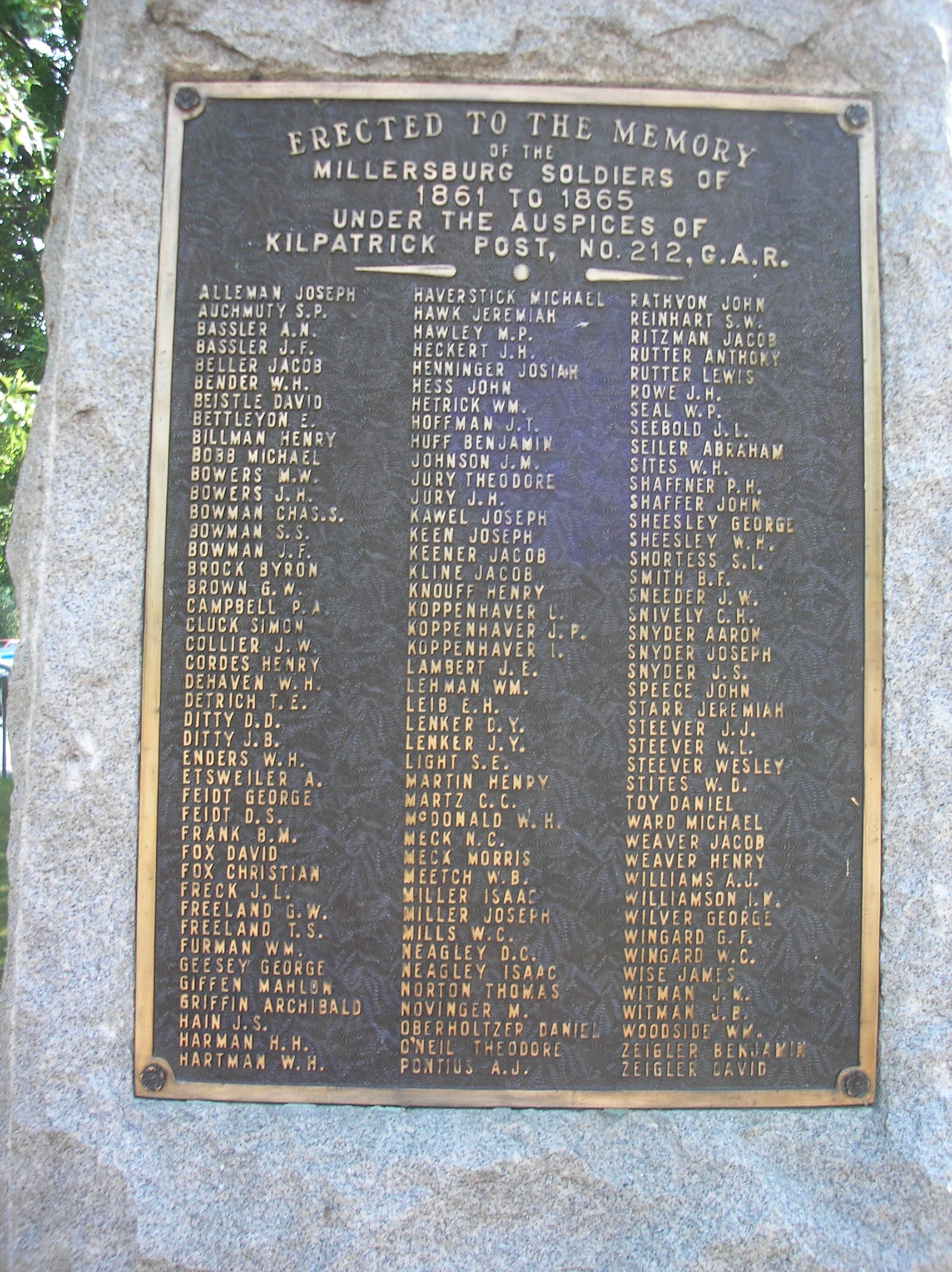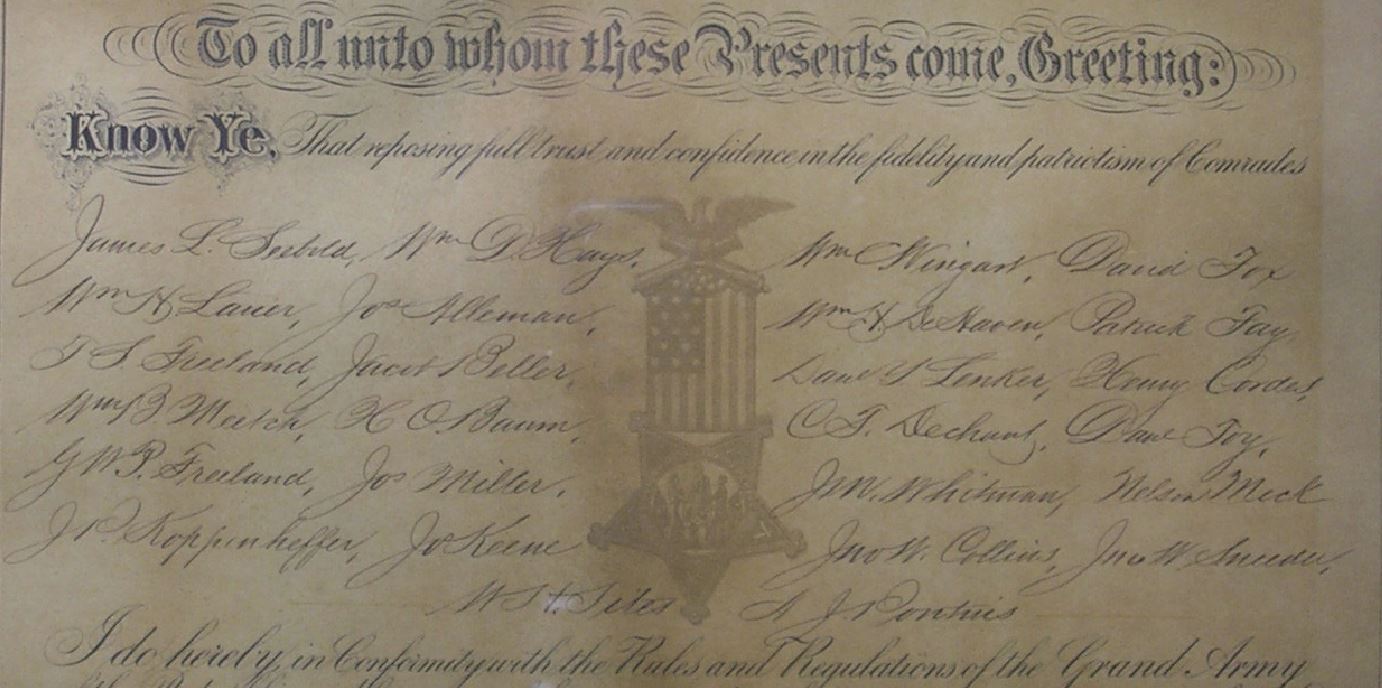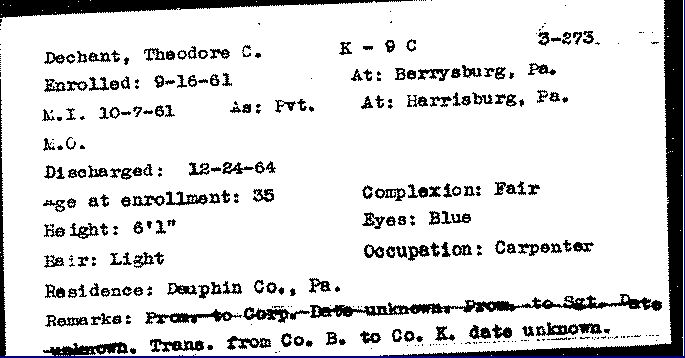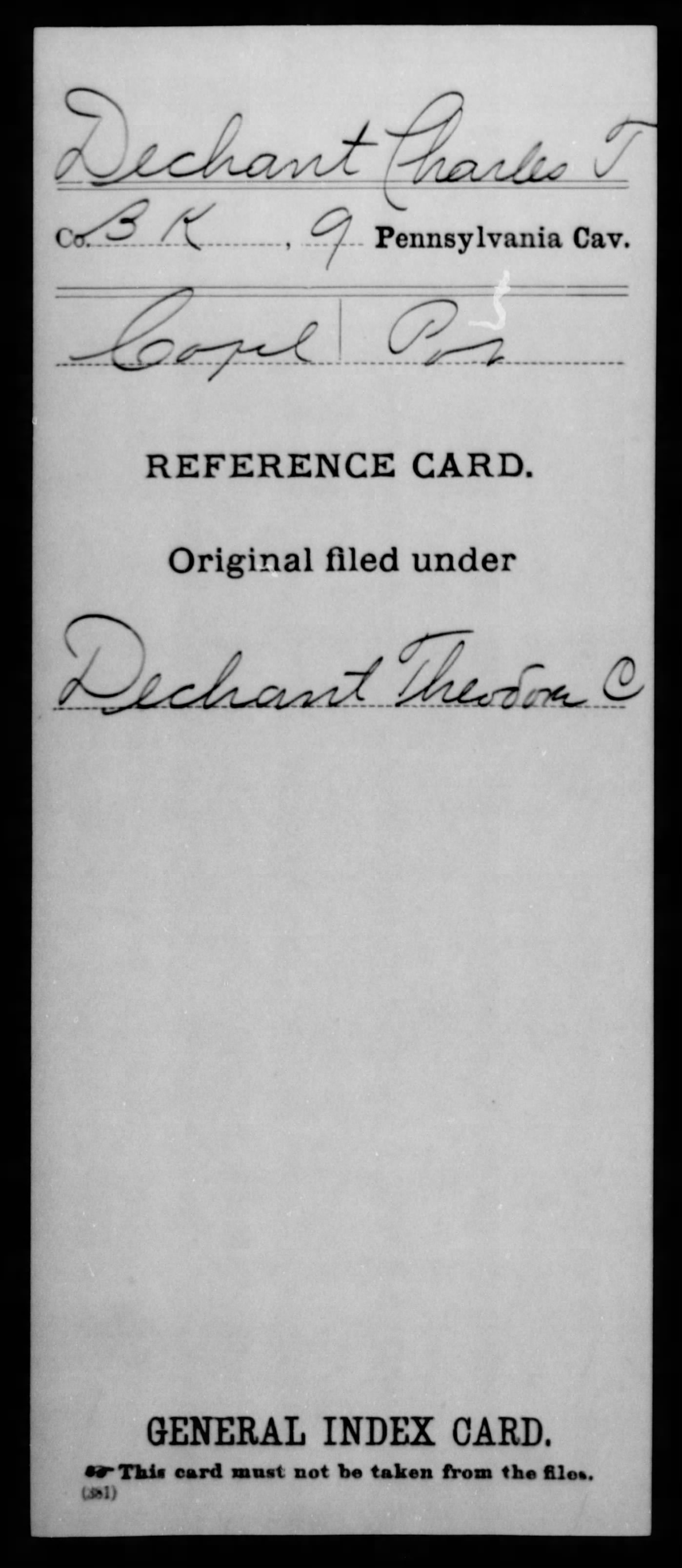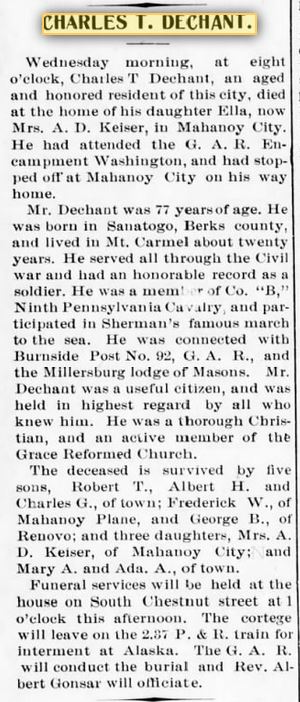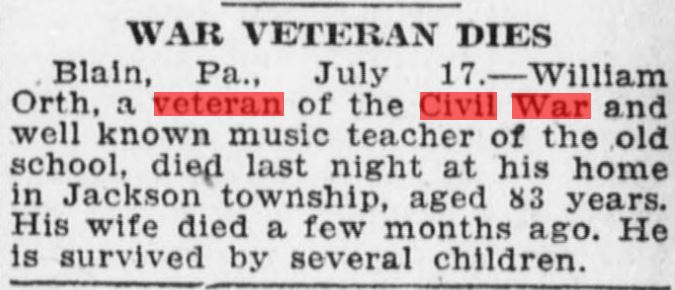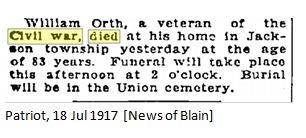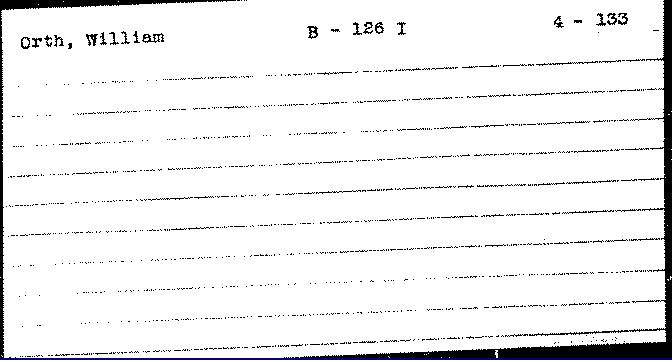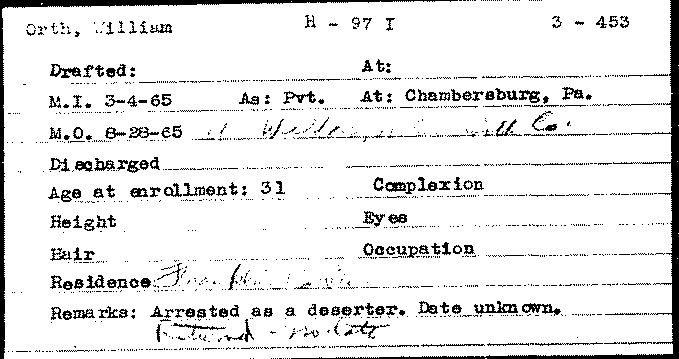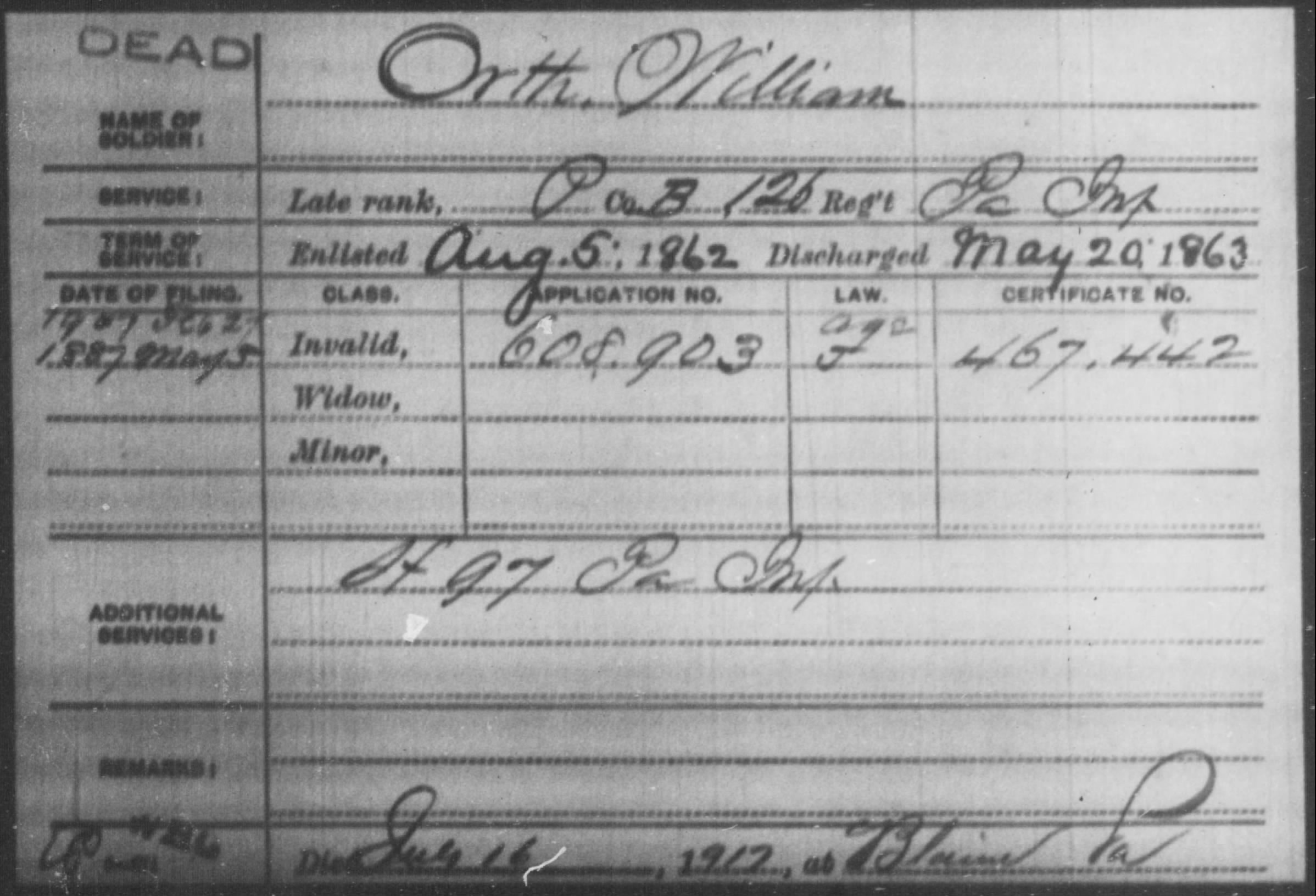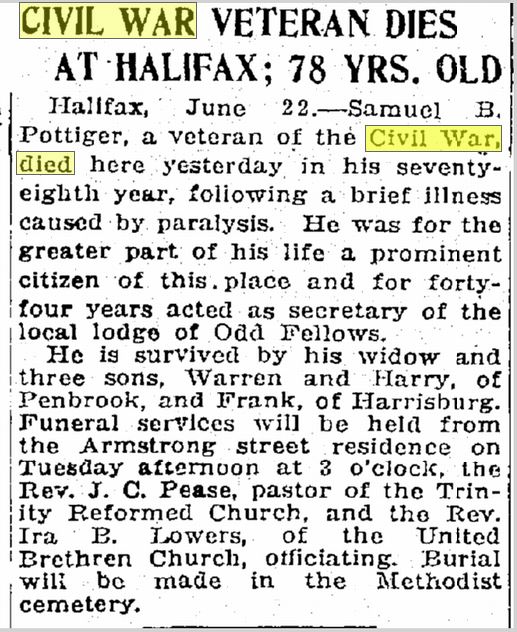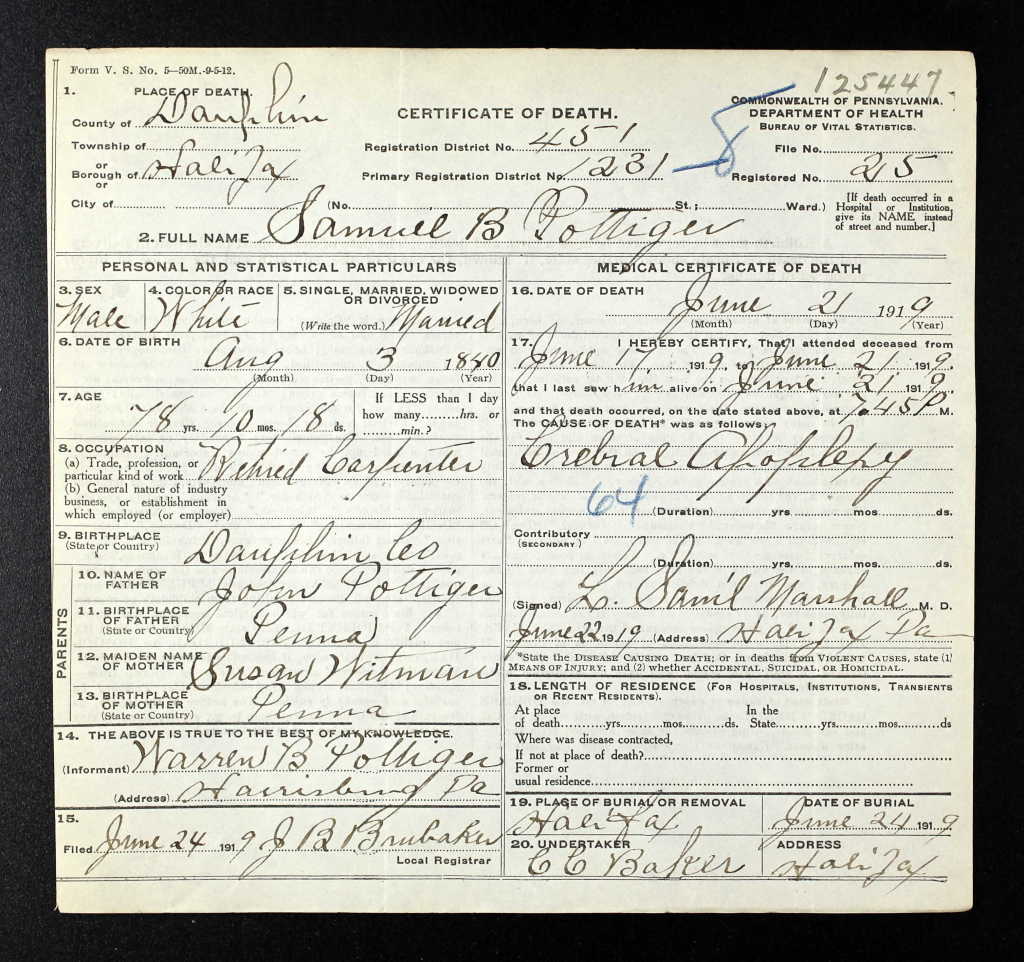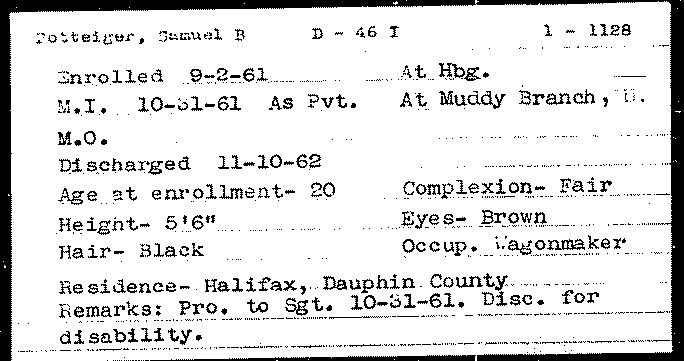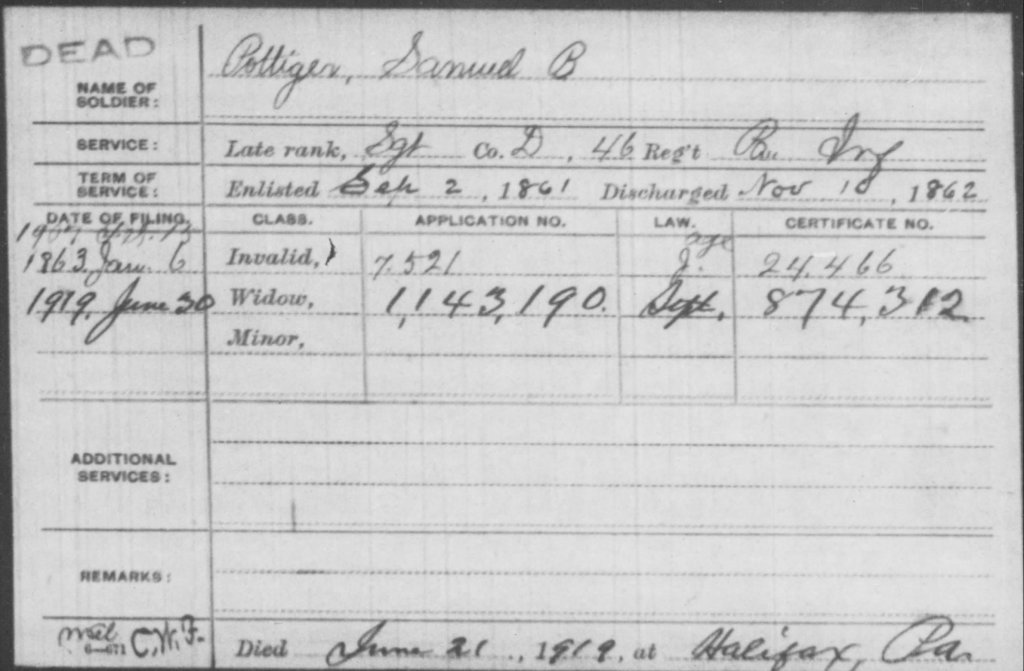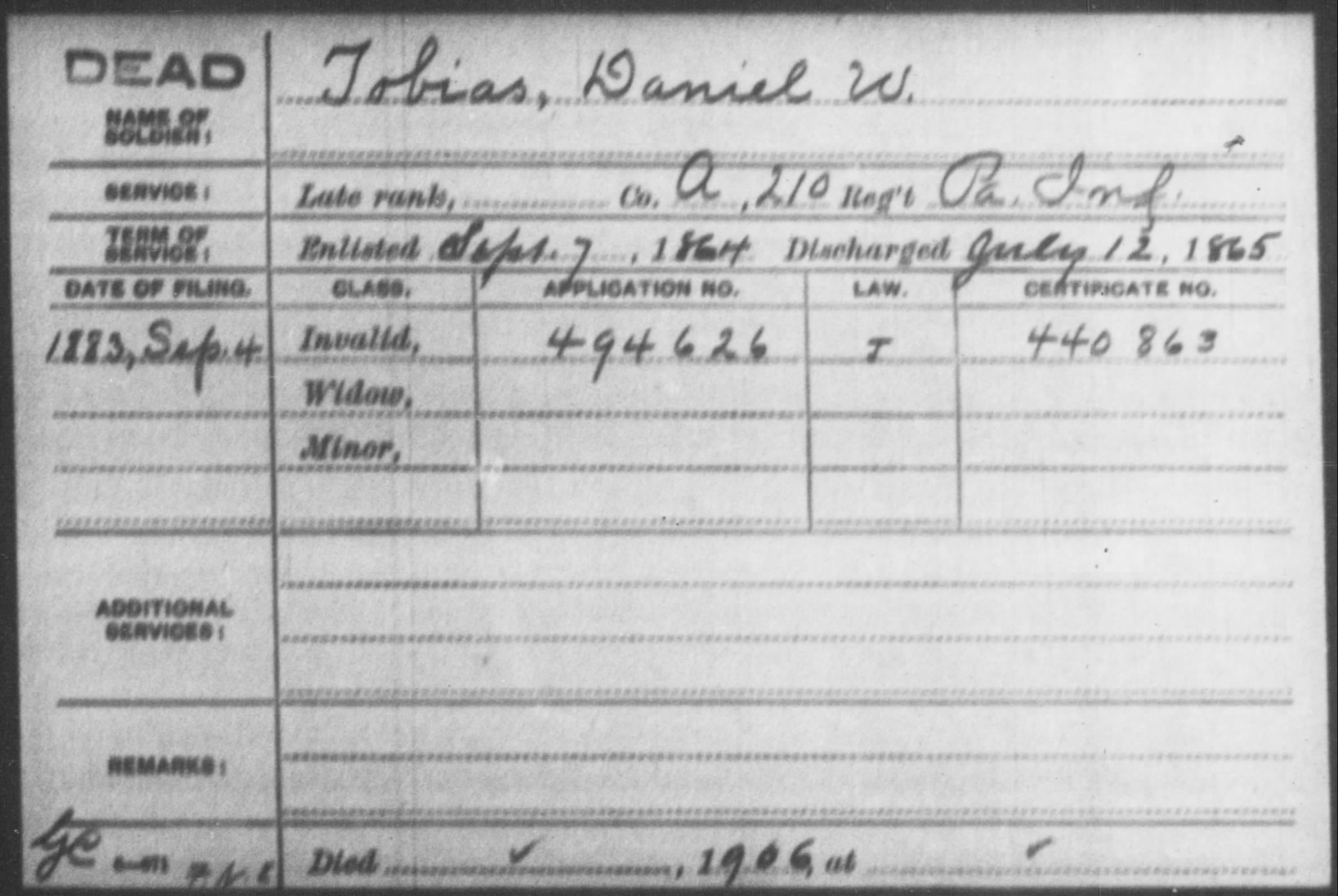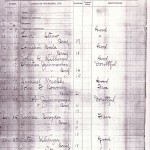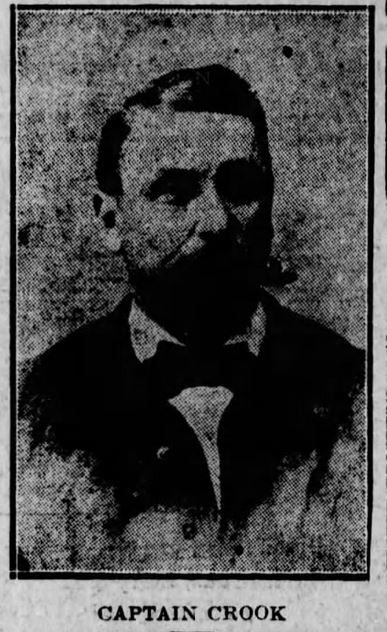Charles T. Dechant – Post Charter Member Not Named on Millersburg G.A.R. Monument?
Posted By Norman Gasbarro on September 21, 2015
A few years back it was suggested here on this blog that the 126 Civil War veterans who are named on the Millersburg Soldier Monument represent only a small fraction of those having a connection to Millersburg and Upper Paxton Township who actually served honorably in the Civil War. As new names are discovered of veterans who should have been named on the monument, it is bewildering that no one has taken up the cause of identifying all who were omitted, discovering why they were omitted, and suggesting ways that these omitted veterans can be recognized in Millersburg‘s central square. “Official” representations continue to convey the impression that only 126 men from Millersburg and Upper Paxton Township served in the Civil War.
At the Historical Society of Millersburg and Upper Paxton Township, the Charter of the Kilpatrick Post, G.A.R. is kept preserved in the Civil War Display. On that Charter is the name of “C. T. Dechant,” (2nd column, 4th row – shown above) one of the founding members.
Charles Theodore Dechant, born in February 1825 in Pennsylvania, was the son of Rev. Heinrich Jacob Wilhelm Dechant (1784-1832), a German immigrant who became a prominent minister in the area of Berks and Lancaster Counties.
During the Civil War, Charles T. Dechant, also known as Theodore C. Dechant, enrolled in the 9th Pennsylvania Cavalry, Company B, as a Private on 16 September 1861 – at Berrysburg, Dauphin County. This company of the 9th Pennsylvania Cavalry was composed almost entirely of men from the Lykens Valley area. Berrysburg is located only a few miles from Millersburg, so Charles had to know men from that town who served with him in the regiment. He was mustered into service on 7 October 1861 at Harrisburg, and then, it is assumed that his military record followed closely the history of the regiment – all of which is documented in Yankee Cavalrymen, a history based on the Diary of William Thomas of Lykens. At some point in his service, C. T. Dechant was transferred to Company K of the 9th Pennsylvania Cavalry. At 6 foot, 1 inches tall, it would have been hard to miss him or overlook him in the regiment. His age of 35 years and his occupation of carpenter also made him stand out and prior to his muster out on 24 December 1964, he was promoted to the rank of Corporal only to be reduced in rank to Private as of his honorable discharge (reason and date not given in the available on-line records).
Shown above is the Military Index Card available from Fold3 which confirms that Charles T. Dechant and Theodore C. Dechant are the same person.
The above Pennsylvania Veterans’ File Card (from the Pennsylvania Archives) confirms that he was a resident of Dauphin County in 1861 when he joined the 9th Pennsylvania Cavalry. After the Civil War, he settled in Millersburg.
 A portion of the 1870 Census for Millersburg Borough is shown above. Theodore C. Dechant was a carpenter in the borough in 1870 – living with his wife Hannah E. Dechant and six children.
A portion of the 1870 Census for Millersburg Borough is shown above. Theodore C. Dechant was a carpenter in the borough in 1870 – living with his wife Hannah E. Dechant and six children.
On 27 October 1873, the above brief article appeared in the Harrisburg Telegraph:
The new Lutheran church at Millersburg is rapidly approaching completion. The scaffolding used in finishing the steeple was taken down today. Mr. C. T. Dechant, the contractor, has furnished us a few leading particulars concerning the dimensions, etc., of the building. The length of the church is 76 feet, width on North Street 45 feet. The height of the steeple from the ground is 126 feet – from the peak of the roof 78 feet. It contains 173,000 brick, and 26 windows. The spire and the roof are slated. It will cost when finished nearly $12,000. The time for the dedication of the structure has not yet been fixed.
A portion of the 1880 Census for Upper Paxton Township is shown below:
Charles T. Dechant was a carpenter living with his wife Hannah E. Dechant and their five children in Upper Paxton Township in 1880.
In the 1890 Veterans’ Census, Charles appears in Mount Carmel, Northumberland County, and is still in Mount Carmel at the time of the 1900 Census where he was employed as a home carpenter. From a series of articles that appeared in the Mount Carmel Item, that Charles T. Dechant moved to Mount Carmel because a number of members of his family were located there, including his brother who was a prominent minister of the Reformed Church.
Charles T. Dechant died on 23 October 1902 and his obituary appeared in the Mount Carmel Item on 25 October 1902:
Wednesday morning, at eight o’clock, Charles T. Dechant, an aged and honored resident of this city, died at the home of his daughter Ella, now Mrs. A. D. Keiser, in Mahanoy City. He had attended the G.A.R. Encampment Washington, and had stopped off at Mahanoy City on his way home.
Mr. Dechant was 77 years of age. He was born in Sanatogo, berks County, and lived in Mt. Carmel about twenty years. He served all through the Civil War and had a honorable record as a soldier. He was a member of Company B, Ninth Pennsylvania Cavalry [9th Pennsylvania Cavalry] and participated in Sherman’s famous march to the sea. He was connected with Burnside Post No. 92, G.A.R., and the Millersburg lodge of Masons. Mr. Dechant was a useful citizen, and was held in highest regard by all who knew him. He was a thorough Christian and an active member of the Grace Reformed Church.
The deceased is survived by five sons: Robert T. Dechant, Albert H. Dechant, and Charles G. Dechant, of town; Frederick W. Dechant, of Mahanoy Plane; and George B. Dechant of Renovo; and three daughters, Mrs. A. D. Keiser, of Mahanoy City; and Mary A. Dechant and Ada A. Dechant, of town.
Funeral services will be held at the house on South Chestnut Street at 1 o’clock this afternoon. The cortege will leave on the 2:37 Pennsylvania and Reading train for interment at Alaska. The G.A.R. will conduct the burial and Rev. Albert Gonsar will officiate.
So, why was the name of Charles T. Dechant omitted from the Millersburg Soldier Monument? He lived in Millersburg or UpperPaxton Township for more years than he lived anywhere else. He served in a regiment and company that was composed of men primarily from the Lykens Valley. He was a Charter Member of the Millersburg G.A.R. Post. He was the contractor who built the Lutheran Church in Millersburg. He was a lifelong member of the Masons Lodge of Millersburg. While it is true that he moved away from Millersburg and spent the last 20 years of his life in Mount Carmel where he participated in the activities of the G.A.R. Post there – that should not be a sufficient reason to ignore him as a Civil War veteran with connections to Millersburg.
The monument does not clearly state that the names on the plaque are those who were members of the Kilpatrick Post at the time it was erected or had to live in Millersburg-Upper Paxton Township for their entire lives to be included – but over the years it has been represented that it was only these 126 men who served from the Millersburg-Upper Paxton Township area. It’s time to correct that by discovering why there were so many names omitted and finding a way to honor those men as well as the 126 who are already named on the plaque.
—————————-
News clippings are from Newspapers.com. Croppings from the census returns are from Ancestry.com.
—————————-
The following information was received from Robert McMurray on 16 October 2015:
I just read your article titled “Charles T. Dechant – Post Charter Member Not Named on Millersburg G.A.R. Monument?” The article was fascinating for me, because I am one of Charles Dechant’s descendants.
As such, I have a few articles which might be of interest to you: I posses the originals for two letters which Charles Dechant wrote to his family at home during the Civil War, in which he describes the reason for his demotion, which you mentioned in your article.
Please see the Civil War letters which are listed on the page at http://dechantweb.net/genealogy/ for the details; I have both scanned images of the original letters and re-typed text (which is considerably easier to read).
Thanks again for a great article.
 ;
;
